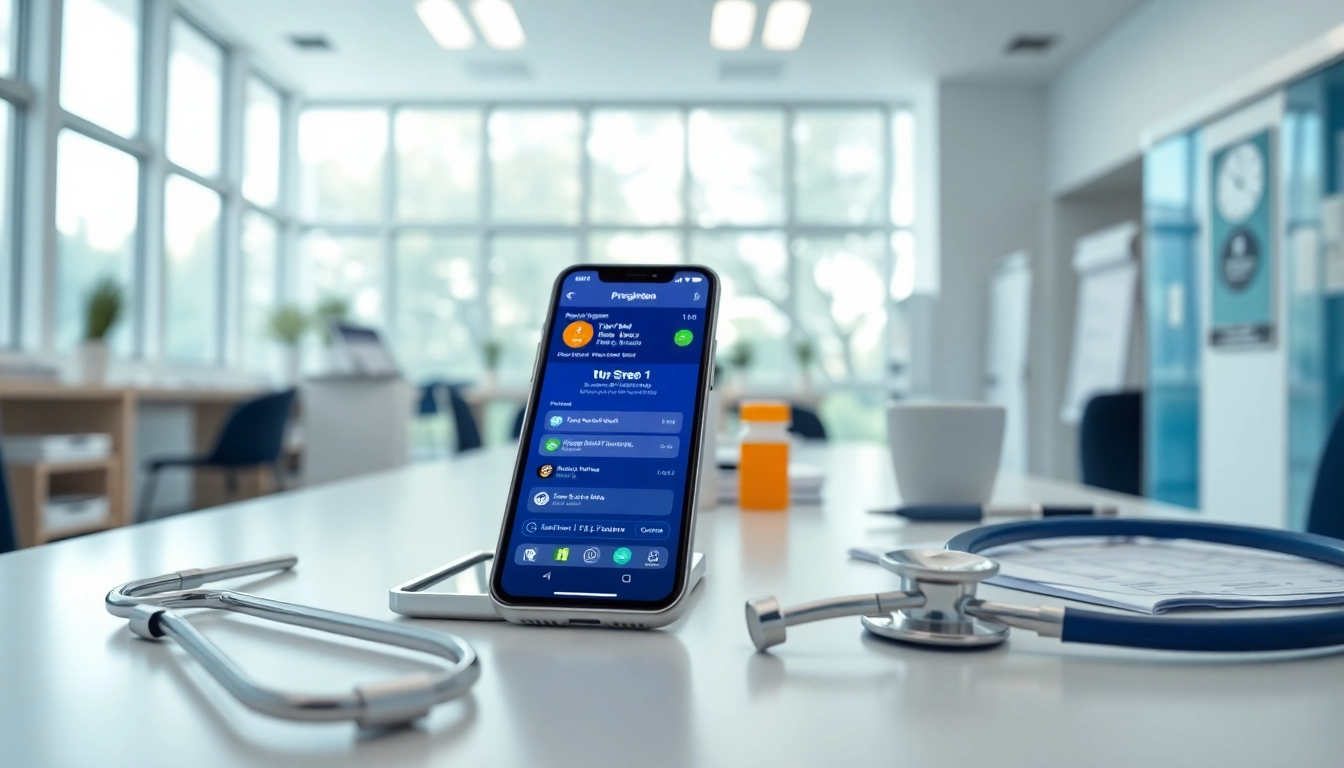Understanding Top Rated Prescription Applications
What Are Prescription Applications?
Prescription applications, also known as medication management apps, are digital tools designed to help users manage their prescriptions and medication regimens effectively. These applications allow users to track their medications, set reminders for dosages, and even order refills from the pharmacy. In addition to being user-friendly, they often integrate closely with healthcare providers to ensure that patients receive optimal care. In recent years, top rated prescription applications have gained popularity, providing efficient solutions for individuals managing chronic conditions, postoperative care, or complex medication schedules.
Key Benefits of Using Prescription Applications
The benefits of using prescription applications extend beyond mere convenience. Here are some key advantages:
- Enhanced Adherence: By offering medication reminders, these apps can improve adherence to prescribed regimens, helping users take medications as directed.
- Easy Access to Information: Users can quickly find drug interactions, dosage information, and side effects, fostering a better understanding of their treatment plans.
- Refill Management: Many applications allow users to manage refills effortlessly, reducing the risk of running out of essential medications.
- Data Tracking: Users can keep track of their medications over time, leading to informed discussions with healthcare providers during appointments.
- Support for Multiple Prescriptions: These apps simplify the management of multiple medications, ensuring users stay organized and informed.
Popular Features of Top Rated Prescription Applications
Top rated prescription applications come packed with features designed to improve user experience and enhance medication management:
- Medication Reminders: Alerts to remind users of when to take their medications.
- Drug Interaction Warnings: Notifications regarding potential interactions between prescribed medications.
- Prescription History Tracking: A record of all past prescriptions, including dosing schedules and refill dates.
- Telehealth Integration: Options for virtual consultations with healthcare providers.
- User-friendly Interface: Intuitive design that makes navigation and usage straightforward for all age groups.
How to Choose the Right Prescription Application
Identifying Your Needs and Preferences
Choosing the right prescription application is a highly individualized process. Start by identifying your specific needs:
- Medication Complexity: Consider whether you are managing multiple medications or a single prescription.
- Technology Comfort Level: Evaluate how comfortable you are with technology—some applications may have a steeper learning curve than others.
- Healthcare Provider Recommendations: Many healthcare providers can recommend apps they trust and find effective.
Evaluating User Reviews and Ratings
After narrowing down your options, it’s essential to evaluate user reviews and ratings:
- App Store Ratings: Check platforms like Google Play and Apple’s App Store for overall ratings and user feedback.
- Feedback on User Experience: Note how users describe their experiences, particularly concerning ease of use and functionality.
- Common Complaints: Look for recurring issues in reviews, which could impact your decision.
Comparing Safety and Security Features
As prescription applications handle sensitive personal information, assessing their safety and security features is crucial:
- Data Encryption: Ensure that the app uses encryption to protect user data.
- Privacy Policies: Review privacy policies to understand how your data will be used and shared.
- Compliance: Check for compliance with healthcare regulations, such as HIPAA, to safeguard your information.
Implementing Top Rated Prescription Applications
Setting Up an Account and Inputting Information
Once you’ve selected a prescription application, the first step is to set up an account:
- Download and Install: Access your app store, download, and install the selected application.
- Create an Account: Enter the necessary information to create an account; this may include your name, email, and password.
- Input Prescription Information: Manually input your prescription details or allow healthcare providers to sync data through the app.
Integrating with Healthcare Providers
Integration with healthcare providers enhances the efficacy of prescription applications:
- Connect with Providers: Many applications allow users to connect directly with their healthcare providers for seamless communication regarding their prescriptions.
- Share Medical History: Securely share your medication history and current prescriptions with your healthcare team for integrated care.
- Collaborative Decision-Making: Utilize the app to facilitate discussions with healthcare providers about treatment adjustments or new prescriptions.
Utilizing Reminders and Alerts Effectively
Making the most of reminder and alert features increases adherence to medication regimens:
- Set Up Alerts: Customize alerts to match your schedule, ensuring you receive notifications when it’s time to take medication.
- Sync with Calendars: If possible, sync the app with your calendar for a holistic view of appointments and reminders.
- Feedback on Reminders: Use the feedback mechanism within the app to adjust reminder frequency based on your medication routine.
Maximizing the Benefits of Prescription Applications
Tracking Medication History and Refills
Effectively using the tracking features helps maintain comprehensive knowledge of your medication regimen:
- Log Dosage Times: Make it a habit to log times you take medications to create a detailed history.
- Be Proactive with Refills: Set reminders for refills well in advance to avoid running out of necessary medications.
- Review History: Regularly review medication history to discuss changes or concerns during healthcare visits.
Managing Multiple Prescriptions Seamlessly
For users managing numerous medications, organizing them becomes crucial:
- Color-Coding Medications: Use features that allow color-coding different medications for easy identification.
- Start with the Most Critical: Prioritize medications that require more frequent dosing or have high importance.
- Use Shared Accounts: Some applications offer shared accounts for family members, enabling caregivers to assist in management.
Utilizing Support and Resources Within the App
Many prescription applications offer additional resources that can be beneficial:
- Educational Materials: Leverage informational articles and videos provided by the app to enhance understanding of medications.
- Access to Healthcare Professionals: Some apps provide chat support, allowing users to communicate with pharmacists or doctors regarding questions and concerns.
- Community Forums: Engaging in forums can offer support from other users navigating similar health journeys.
The Future of Prescription Applications in Healthcare
Innovations on the Horizon
The landscape of prescription applications is evolving rapidly as technology advances:
- AI Integration: Artificial intelligence is expected to enhance user experience, providing personalized recommendations and monitoring for medication adherence.
- Wearable Tech Compatibility: Future applications may seamlessly integrate with wearable technology, allowing for real-time health monitoring and medication management.
- Blockchain for Security: Implementation of blockchain technology could increase data security and trust in prescription systems.
How Technology is Shaping Prescription Management
Technology continues to reshape how prescriptions are managed:
- Telemedicine Growth: As telemedicine rises, prescription applications will likely integrate more closely with virtual consultations, fostering collaborative healthcare.
- Data Analytics: Advanced analytics could help identify patterns in user behavior, improving medication adherence strategies.
- Interoperability: Improved systems will allow better data sharing between various healthcare platforms, optimizing patient care.
The Role of Telehealth in Prescription Applications
Telehealth plays a crucial role in modern healthcare, and prescription applications are no exception:
- Remote Consultations: Users can consult with healthcare professionals from the comfort of their homes, facilitating medication discussions.
- Immediate Medication Adjustments: Telehealth allows healthcare providers to rapidly modify prescriptions based on real-time assessments.
- Education and Training: Telehealth can be an invaluable resource for educating patients about their prescriptions and potential side effects.











Leave a Reply